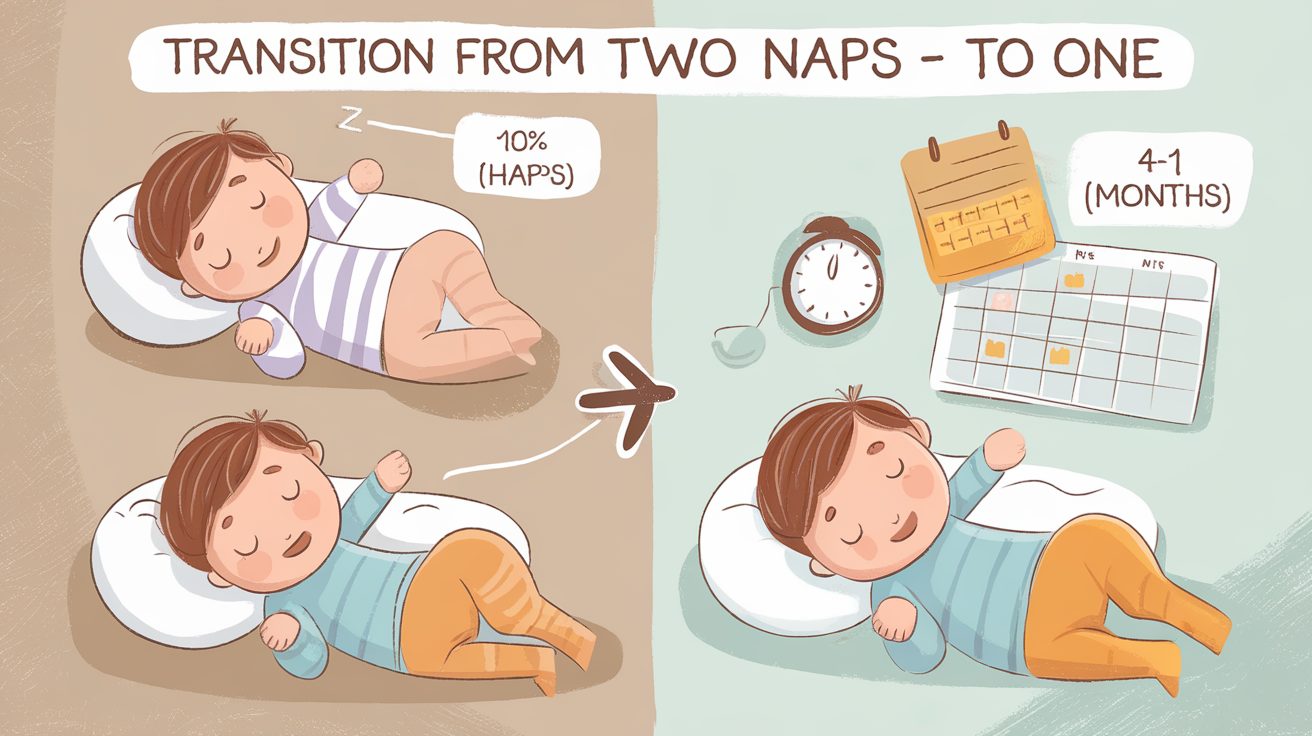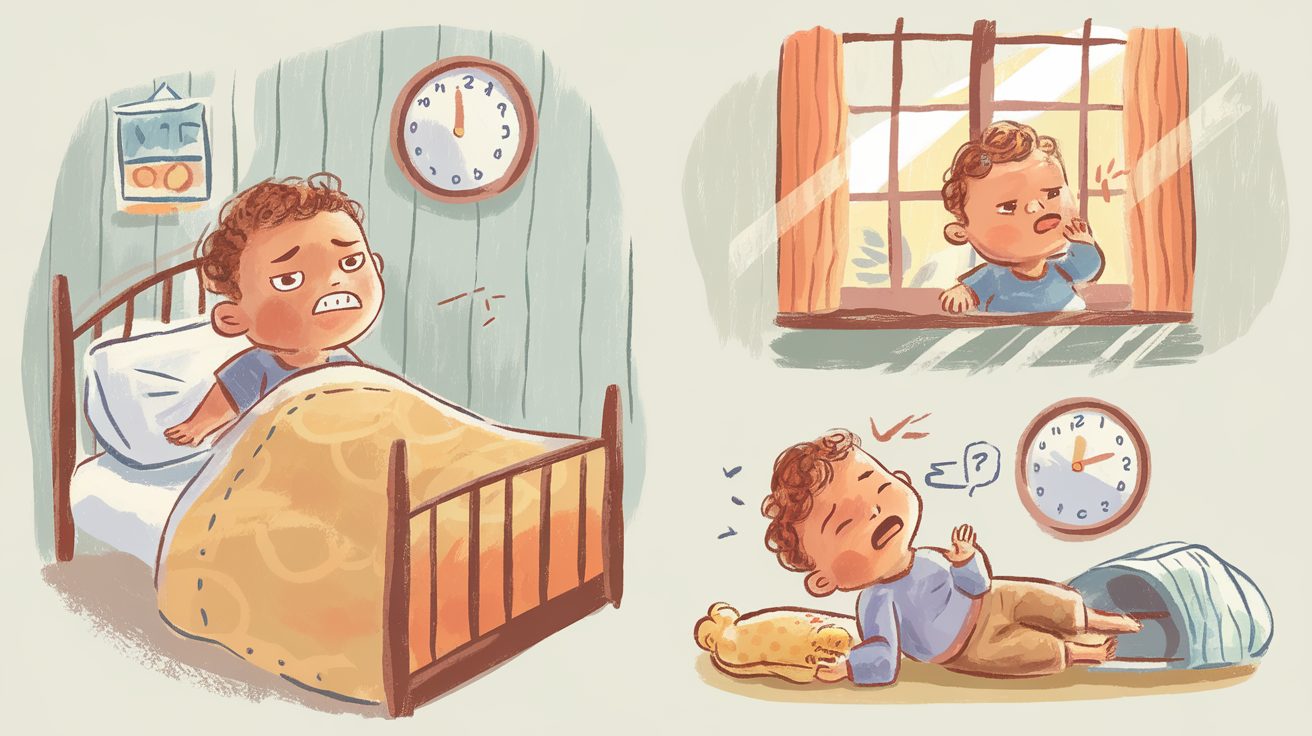Has nap time chaos got you feeling overwhelmed?
You’re not alone.
As your toddler outgrows the two-nap routine, sleep schedules can feel like a puzzle with missing pieces.
This transition isn’t just about changing clocks—it’s about understanding your child’s growing needs and helping them (and you) find a new sleep rhythm that works.
This guide to transitioning to one nap for your child.
Understanding the Basics of Nap Transition

1. The Sleep Shift Explained
The “sleep shift” is a normal phase in your toddler’s development where their sleep needs change. During this time, they may resist naps, wake up more at night, and have difficulty settling.
Be patient, maintain a consistent routine, and trust your instincts to help your toddler through this challenging transition.
2. Timing is Everything
Most children start the one-nap trip between 14 and 18 months. But here’s the truth: kids aren’t machines with exact schedules.
Every child develops differently. Some are early birds who need less sleep, while others require more rest time.
3. Reading Your Child’s Sleep Signals
Parents, become sleep detectives! Watch for these important clues.
Your child might be fighting the second nap. They could show longer morning awake times. You might notice less crankiness between naps. Increased energy during the day is another key signal.
4. The Nap Transformation
Think of nap time as a changing outfit. What worked yesterday might not work today.
The big switch typically happens when the morning nap becomes the main event. The afternoon nap slowly disappears. Total sleep time remains similar. Your child’s overall day rhythm will adjust naturally.
5. Flexibility is Your Friend
No perfect formula exists. Your child writes their own sleep story.
Observe closely and stay patient. Trust your parental instincts. Celebrate small victories along the way. The most important thing is to remain calm and flexible.
When to Switch to One Nap?
1. Nap Resistance Begins
Imagine this scenario: It’s afternoon nap time. Instead of sleeping, your little one is suddenly more active than a wind-up toy. They’re playing, talking, or doing everything except sleeping.
This isn’t just a random day. It’s a sign.
Your child might start fighting that second nap like it’s their most important mission. They’ll refuse to settle down. The usual afternoon quiet time becomes a battle of wills.
2. Crazy Sleep Patterns Emerge
Remember when your child used to sleep like a rock? Those days are changing.
Suddenly, they’re waking up super early. Night sleep becomes choppy and unpredictable. Some nights, they’ll sleep for hours. On other nights, they’re up every few minutes.
This isn’t just annoying. It’s a clear signal that their sleep needs are shifting.
3. Nap Schedule Starts Falling Apart
Your perfectly planned two-nap routine begins to crumble. Naps become shorter and shorter.
Sometimes, they skip a nap entirely. What’s happening? Your toddler is growing up. Their body is telling you it’s time for a change. One long nap might replace those two shorter ones.
The key is to watch, wait, and be flexible. Every child is different. Trust your instincts and pay attention to your toddler’s unique signals.
Transition Strategies That Actually Work
1. Slowly Stretch Wake Times
If you prefer a gentle approach, slowly stretching wake times might be the best method for you. Start by gradually extending your child’s morning wake windows.
Each week, move the first nap later by 15-30 minutes. This allows your child to adjust to the new schedule slowly.
As you make these changes, keep a close eye on your child’s energy levels to ensure they aren’t getting overtired.
2. The Cold Turkey Method
Sometimes, this is the best approach to use. If you feel your child is ready, choose a day to switch completely to one nap.
Commit to this new schedule and stick with it, even if your child is a bit cranky at first.
Prepare for some fussiness as your child adjusts, but know that it will get better with time and consistency.
3. The Flexible Approach
Every child is different, and some may need a more flexible approach. If your child seems to need two naps on some days and one nap on others, that’s okay.
Listen to your child’s body and follow their cues. Don’t stress about achieving the perfect schedule right away.
Be ready to adjust as needed and trust that your child will eventually settle into a consistent one-nap routine.
4. The Flip-Flop Technique
If your child is struggling with the transition, the flip-flop technique can help manage their tiredness. Alternate between one and two naps each day, depending on your child’s mood and energy levels.
On days when your child seems more tired, offer two naps. On days when they seem to have more energy, stick with one nap.
Watch for signs of overtiredness and be patient with the process.
How to Handle Common Challenges That May Arise During the Transition?
1. Dealing with Short Naps
Short toddler naps are normal. Growing bodies need less sleep, and things like new skills, changes in sleep patterns, and noises can make it hard for them to nap longer.
To help your toddler nap better, make their room dark and quiet. Use a white noise machine and keep the temperature comfortable.
Having the same bedtime routine every night is key. Do calm activities before bed, and keep things predictable.
2. Managing Early Wake-Ups
If your toddler is waking up too early, it could be because they are getting too much daytime sleep, they are feeling hungry, or their room is uncomfortable.
To help your toddler sleep later, try putting dark curtains on their windows and keeping their room very dark. When they wake up, keep things calm and quiet. Avoid letting them play with anything too exciting right away.
Instead, keep the morning routine relaxed; this will help your toddler start sleeping a little later in the morning.
Conclusion
Transitioning your child to one nap can be a big change, but it’s a natural step as they grow.
By following a consistent routine and watching for signs of readiness, you can make the shift smoother for both you and your child.
Remember, every child is different. Some may adjust quickly, while others need more time.
In the end, moving to one nap can lead to better sleep for your child and more predictability in your day. Trust the process, and soon, you’ll both enjoy the benefits of this new routine.
A Guide to Transitioning to One Nap for Your Child is here to help you every step of the way. You’ve got this!
Frequently Asked Questions
At What Age Do Most Babies Transition to One Nap?
Most babies are ready to switch to one nap between 12 and 18 months old. However, every baby is different, so it’s important to watch for signs that your little one is ready to make the change.
What Are Some Signs That My Baby Is Ready to Drop to One Nap?
If your baby is consistently refusing their second nap, taking longer to fall asleep, or waking up earlier from naps, it might be time to consider switching to one nap. You may also notice that your baby is happier and more energetic with just one nap.
How Long Should My Baby’s One Nap Be?
When your baby first transitions to one nap, it may be longer than their usual naps. Aim for one nap that lasts between 2 and 3 hours. This will help them get the rest they need during the day.
What if My Baby Has Trouble Adjusting to One Nap?
It’s normal for babies to take some time to adjust to a new nap schedule. If your baby is struggling with the transition, try gradually pushing back their morning nap until it’s around lunchtime.












